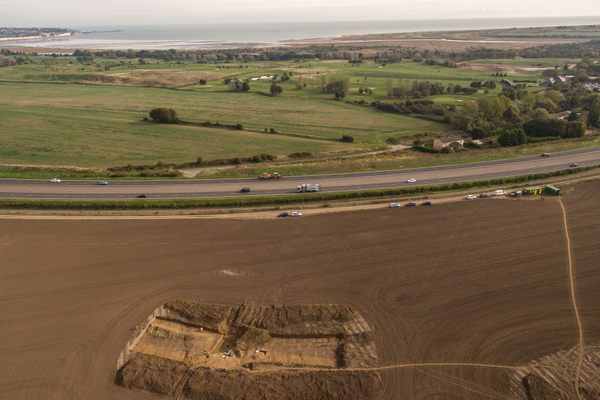Found: A Cache of 18th-Century Rockets in India
One of the fiercest opponents of British colonialists had rockets unlike any his enemies had seen.

Here’s how Tipu Sultan, the ruler of the Indian Kingdom of Mysore at the end of the 18th century, felt about the British. He commissioned an automaton, more than two feet high and about five-and-a-half feet long, of a tiger—his emblem—that had pounced on a European man. Winding the crank on the tiger’s side would move the man’s arm up and down over his open mouth, as he emitted a mournful high-pitched note, which was followed by the deeper, resonant “growl” of the tiger.
As a military leader, Tipu’s prowess backed up the growl of his automaton. He’s considered one of the fiercest opponents of British colonialism in India, and he had a frightening weapon on his side—iron-cased rockets, the first of their kind to be successfully used in battle. Recently, at the site of a fort in the Shimoga district of India’s Karnataka state, archaeologists dug up more than 1,000 Mysorean rockets hidden in the 18th century for later use.

When Tipu Sultan took power after his father’s death in 1782, Mysore had already been battling with the British East India Company for years. Tipu’s father had made sure his son was highly educated and had experience overseeing affairs of state and war from an early age.
One of the most alarming and powerful weapons that Mysore had against the British was its rocket technology: Under Tipu, the army had a contingent of 5,000 rocket launchers. The rockets were made of iron tubes, bladed on their sides, that contained the propellant.
Under Tipu, the Kingdom of Mysore fought to improve the quality of life of its people, while keeping British invaders at bay. France was a close ally, both on military and economic matters. In the 1780s, he struck a trade deal with France and worked to expand the local silk production industry, creating a thriving economy in his territory.

When Mysore first used its rockets against the British, they were taken by surprise and described them as a “flying plague.” They were a decisive factor in the end of the Second Mysore War. In the fourth and final war, which ended in Tipu’s death, a turning point came when a British shell exploded a cache of rockets. After the battle ended, the British captured examples of the rockets and sent them back to England, where the technology helped inspire the rockets used in the Napoleonic wars.
Back in 2002, though, a small supply of centuries-old, rusted rockets turned up near a fort in Shimoga. They were dated back to the era of Tipu Sultan, and after additional research, the state archaeology agency decided to search for more rockets. At the end of July, they excavated a dried-up well where the ground smelled of gunpowder, reports Suryaa, a Hyderabad-based news outlet. After three days of excavations, they had turned up more than 1,000 rockets, each around a foot in length and still filled with potassium nitrate and other propellants. Examples of the rockets will be held in a local museum, an artifact of Tipu’s resistance to colonial power.


















Follow us on Twitter to get the latest on the world's hidden wonders.
Like us on Facebook to get the latest on the world's hidden wonders.
Follow us on Twitter Like us on Facebook